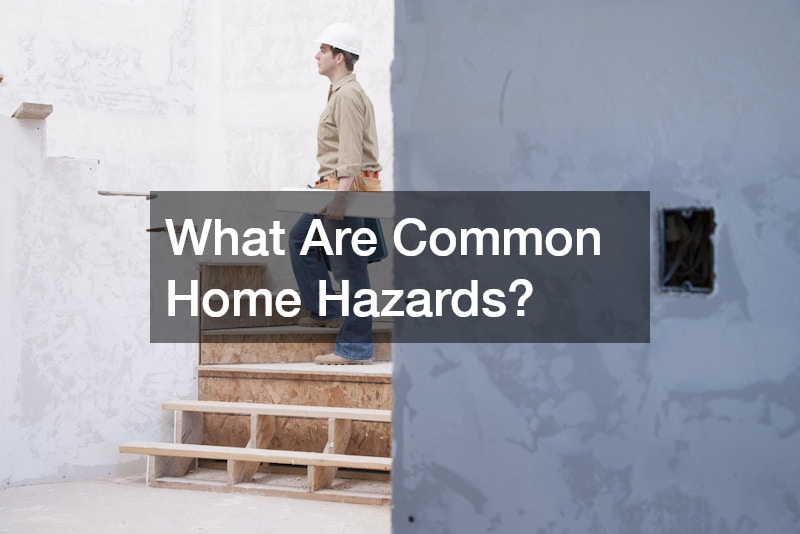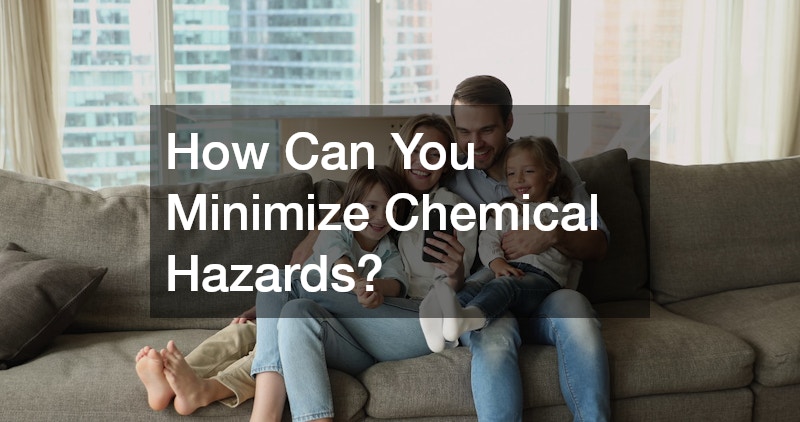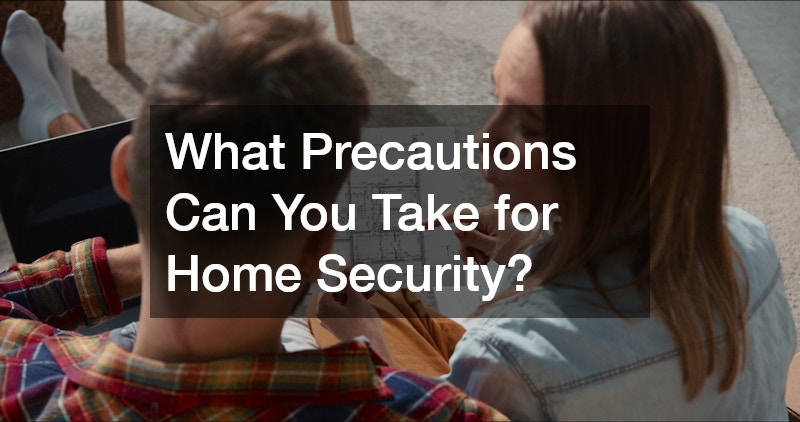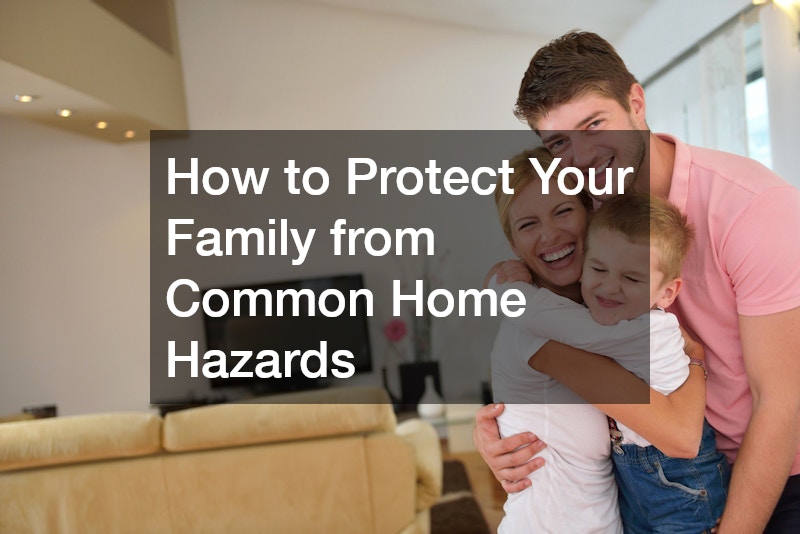Understanding and mitigating home hazards is crucial to ensuring the safety and well-being of your family. The home, ideally a sanctuary of comfort, can also harbor many potential dangers if these risks are not addressed promptly. This article provides comprehensive guidance on various common home hazards and practical solutions to protect your loved ones from these often overlooked threats.
From electrical mishaps to chemical hazards, fire risks, and structural safety, identifying and addressing these issues is essential for every homeowner. Taking preventive measures not only safeguards your family but also maintains the integrity and value of your home. With informed awareness and proactive action, these common home hazards can be significantly mitigated, ensuring your home remains a safe environment for all its inhabitants.
What Are Common Home Hazards?

Common home hazards can vary greatly but often include risks associated with electricity, fire, water, chemicals, and physical structure. Identifying these hazards starts with recognizing potential risks in everyday household items and situations. From faulty wiring to improper storage of hazardous chemicals, each home hazard presents its unique challenges and requires specific solutions for prevention.
Electrical hazards, for instance, are prevalent and can be addressed through simple solutions like using an outlet surge protector. Fire risks are another major concern, necessitating proper fire safety protocols such as installing smoke detectors and having a fire extinguisher readily available. Chemical hazards often go unnoticed, but safely storing household cleaning agents and chemicals can prevent accidental poisoning.
Mitigating home hazards requires a proactive approach and ongoing vigilance. Regular home inspections, education on potential hazards, and making necessary adjustments to your living environment are crucial steps. By addressing these risks head-on, you provide a safe and nurturing environment for your family, free from the dangers posed by common household hazards.
How to Identify Electrical Hazards in the Home
Identifying electrical hazards in your home involves a thorough inspection of your home’s electrical systems and devices. Look for signs of wear and tear, such as frayed wires, sparks, or buzzing sounds, which can indicate potential hazards. Engaging a local electrician can provide professional assessment and remedial advice on these electrical vulnerabilities.
Outlet surge protectors are a simple yet effective measure to protect against power surges that can damage appliances and cause fires. Ensure that all electrical outlets and plugs are properly grounded, and avoid overloading circuits, which can also pose significant risks. Additional safety measures include replacing outdated wiring and using ground fault circuit interrupters (GFCIs) in areas prone to moisture, such as kitchens and bathrooms.
Regular maintenance of your home’s electrical system will help prevent these hazards from becoming serious threats. Incorporate regular checks into your home safety routine and consider scheduling an annual inspection with a licensed electrician. By staying proactive, you can reduce the risk of electrical hazards and keep your family safe from potential accidents.
What Are the Risks of Fire Hazards?
Fire hazards are among the most dangerous home hazards that can cause significant damage and pose life-threatening risks. Common fire hazards include unattended candles, overloaded electrical outlets, and improper use of cooking appliances. Implementing a comprehensive fire safety plan is essential in mitigating these risks.
Installing a reliable door control system can be an integral part of your fire safety strategy, allowing for quick egress in the event of a fire. Additionally, having working smoke detectors and a fire sprinkler system, installed by certified fire sprinkler contractors, enhances your home’s defense against potential fires. Regular maintenance and testing of these systems are vital to ensure they function effectively during an emergency.
Educating your family about fire hazards and safe practices significantly contributes to prevention efforts. Establish family fire drills and ensure everyone knows the escape routes and meeting points outside the home. By combining preventative strategies with practical tools, you can substantially reduce the likelihood of fire hazards impacting your home.
How Can You Minimize Chemical Hazards?

Chemical hazards in the home often stem from everyday cleaning products, pesticides, and other household chemicals. Improper storage and handling of these substances can lead to skin irritation, respiratory problems, and other health issues. To minimize these hazards, ensure that chemicals are kept in their original containers with clear labels and are stored safely away from children and pets.
Hiring local experts such as an experienced local electrician can assist in safely identifying and mitigating chemical hazards related to electrical equipment and maintenance. It is also critical to provide adequate ventilation in areas where chemicals are used to reduce the risk of inhalation. Furthermore, using eco-friendly products whenever possible can reduce chemical exposure and contribute to a healthier home environment.
Always read and follow the instructions on chemical products to prevent misuse and accidental exposure. Comprehensive education on chemical hazards and proper handling practices for all family members is essential to maintaining safety. By addressing chemical hazards with care, you can protect your family from potential health risks associated with these substances.
What Are the Dangers of Carbon Monoxide?
Carbon monoxide (CO) is a silent and deadly gas that poses a significant home hazard. This colorless and odorless gas can result from faulty fuel-burning appliances, making it vital to maintain vigilance against its presence. Symptoms of carbon monoxide poisoning can range from mild headaches to severe neurological damage or even death if exposure occurs for an extended period.
To protect against carbon monoxide hazards, it is crucial to install CO detectors in strategic locations around the home, particularly near bedrooms and fuel-burning appliances. Regular maintenance performed by professionals, such as fire sprinkler contractors and HVAC technicians, can ensure these appliances are operating safely and efficiently. An annual inspection and cleaning of chimneys and vents is also advised to prevent CO build-up.
Familiarize your family with the symptoms of CO poisoning and the actions to take if an alarm sounds. Regularly test CO detectors and replace the batteries as needed to ensure their effectiveness. A proactive approach and continued awareness are key to preventing carbon monoxide hazards and keeping your family safe.
How to Protect Your Family from Water Hazards
Water hazards in the home can lead to issues such as mold growth, structural damage, and safety hazards in slippery conditions. Leaking pipes, poor drainage, and excess moisture are common culprits of water-related hazards. To protect your family, regular inspections for leaks and dampness are crucial, and prompt repairs should be conducted by professionals when needed.
Asbestos abatement companies can address potential asbestos hazards that may become prevalent in older homes due to water damage. Besides, ensuring efficient drainage systems and using dehumidifiers can help manage humidity levels and prevent mold growth. Additionally, never block vents with furniture or other objects, as proper air circulation reduces moisture build-up.
A well-maintained home, free of water hazards, provides a healthier environment for your family. Implementing precautionary measures, such as installing sump pumps in flood-prone areas or waterproofing your basement, can also safeguard your home against significant water damage. Regularly engaging professionals to assess and maintain water systems is a proactive approach to minimizing water hazards.
How Can You Ensure Safe Use of Gas Appliances?

Gas appliances, while convenient and efficient, must be used safely to avoid potentially dangerous hazards like leaks and explosions. Ensuring proper installation and maintenance by qualified professionals is crucial. An annual inspection by a local HVAC company can aid in detecting and addressing issues before they escalate.
Installing a gas leak detector can provide early warning of any leaks, allowing for prompt action to prevent hazards. Regularly checking the functionality of gas appliances, including ensuring ventilation is not obstructed and pilot lights are burning blue, helps maintain their safe operation. Engage experts such as an inground pool company to handle gas installations and repairs for outdoor amenities.
Educate your family on the signs of gas leaks, like rotten egg odors or dead houseplants, and the steps to take if they suspect a leak. Encouraging awareness and routine precautions significantly reduces the risk of gas-related home hazards. Safe gas appliance use ultimately contributes to a secure and hazard-free home environment.
What Are Structural Hazards and How to Handle Them?
Structural hazards may arise from damage to the home’s foundational components, such as walls, roofs, and floors. These hazards compromise the integrity of the home and can pose significant safety risks to occupants. Regular inspection and maintenance are necessary to ensure that structural components remain secure and free from damage.
Employing the services of an experienced HVAC company can assist in identifying and mitigating issues related to heating, ventilation, and air conditioning systems. Addressing and repairing cracks in walls or sagging roofs promptly will prevent further damage and potential collapses. In addition, checking for pests that could weaken structural materials, such as termites, is another crucial step in preserving your home’s integrity.
Be active in performing regular checks and repairs, and do not hesitate to consult professionals for more extensive evaluations and repair work. Structural hazards, if left unaddressed, can result in significant repair costs and jeopardize the safety of all home occupants. By taking preventive action, you ensure that your home remains a stable and secure environment.
How to Safeguard Against Physical Hazards?
Physical hazards, such as falls or cuts, are common home hazards that need constant vigilance to prevent. Cluttered living areas, loose carpets, and wet floors are frequent culprits for accidents. Creating a clutter-free and organized home environment minimizes these risks significantly. Regularly inspecting your home for potential dangers—such as uneven flooring, exposed cords, or unstable furniture—can help prevent many avoidable injuries. Even small steps, like keeping walkways clear and ensuring storage spaces are well organized, go a long way toward maintaining a safe environment.
Regular furnace repairs and the maintenance of home heating systems are important, especially in colder climates where accumulated ice and snow can pose slip hazards. Ensure that adequate lighting is available in all areas, especially stairs and pathways, to prevent tripping hazards. Installing secure handrails and slip-resistant mats in high-risk areas like bathrooms and kitchens can further reduce physical hazards. Homeowners should also consider using motion-sensor lighting outdoors and in basements for added safety during nighttime movement. When it comes to outdoor hazards, consider artificial lawn services to avoid risk of dangerous plants and pests.
Home modifications for differently-abled family members, like ramps and grab bars, can also enhance safety. Non-slip floor coatings and corner guards are additional measures that can protect everyone in the household, from children to seniors. Encourage family members to maintain an organized home and correct potential hazards immediately upon noticing them.
What Precautions Can You Take for Home Security?

Ensuring home security is an essential aspect of protecting your family from outside threats and potential home hazards. Investing in a comprehensive security system can provide peace of mind knowing that your home is protected against intruders. Incorporating a door control system with automatic locks and security cameras can enhance home security measures.
It is also advisable to have emergency protocols in place, such as access to a local emergency plumber in the event of severe leaks or water damage that could lead to further hazards. Maintaining a clear communication plan with family members in the event of an emergency also serves to improve your home’s security posture. Simple measures like trimming overgrown shrubs and ensuring adequate outdoor lighting can also deter potential intruders.
Regularly updating security codes and evaluating the effectiveness of your security systems are also key practices. Educating your family on the importance of home security and encouraging vigilant habits further contributes to a safer living environment. By taking these precautions, you create a secured setting, minimizing both internal and external home hazards.
By identifying and addressing common home hazards, you can create a safe and secure living environment for your family. The adoption of preventive measures and consistent vigilance is crucial in tackling potential risks posed by electrical, fire, chemical, structural, and security hazards. Educating your family on the various aspects of home safety and implementing these precautions are essential steps to protect against potential dangers.
Being proactive in maintaining your home’s safety and calling on professional services for assistance when necessary ensures peace of mind and the well-being of your loved ones. By taking these steps, you not only secure your family’s immediate safety but also contribute to the longevity and value of your residence.


